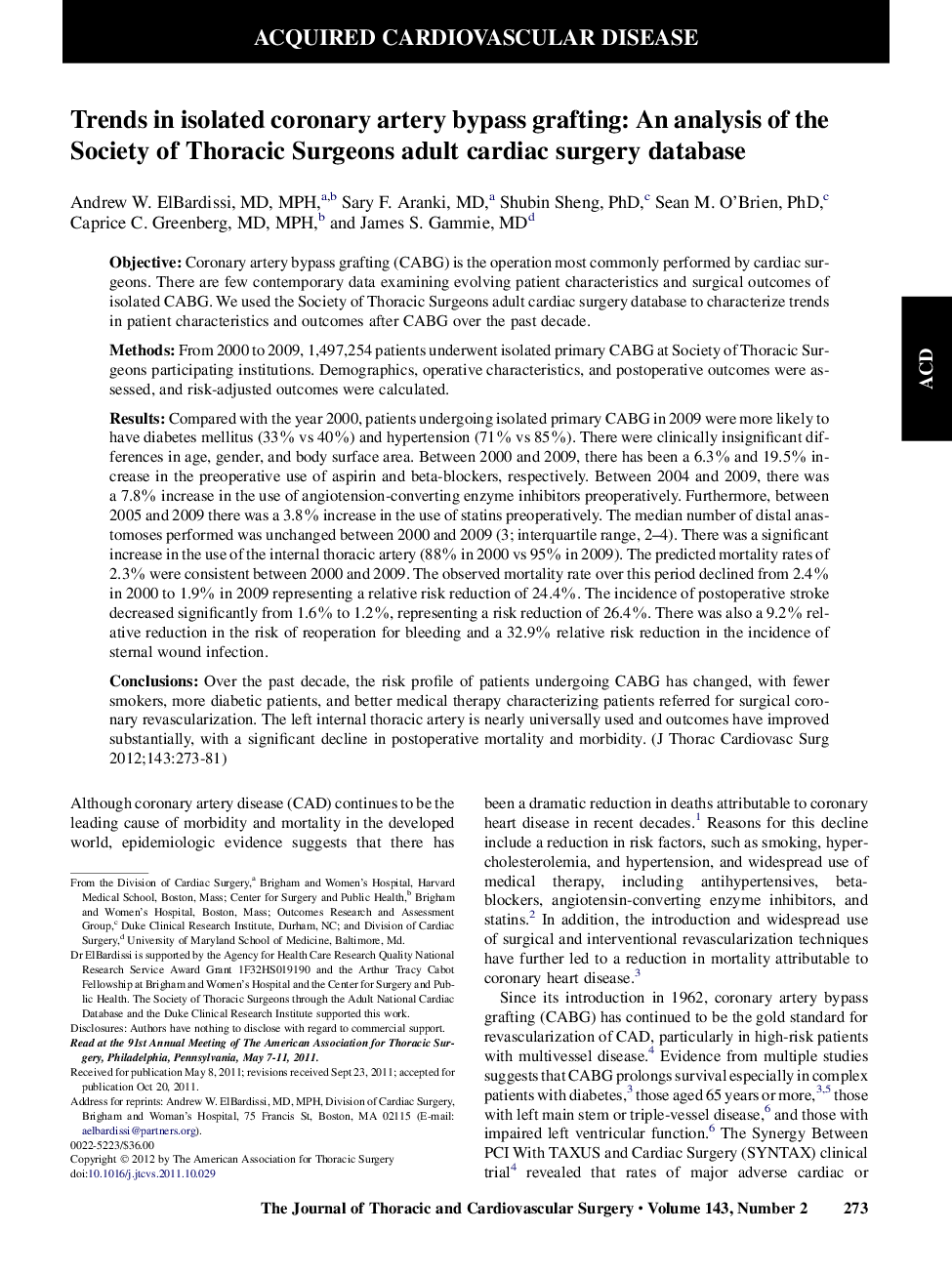| کد مقاله | کد نشریه | سال انتشار | مقاله انگلیسی | نسخه تمام متن |
|---|---|---|---|---|
| 2981433 | 1578640 | 2012 | 9 صفحه PDF | دانلود رایگان |

ObjectiveCoronary artery bypass grafting (CABG) is the operation most commonly performed by cardiac surgeons. There are few contemporary data examining evolving patient characteristics and surgical outcomes of isolated CABG. We used the Society of Thoracic Surgeons adult cardiac surgery database to characterize trends in patient characteristics and outcomes after CABG over the past decade.MethodsFrom 2000 to 2009, 1,497,254 patients underwent isolated primary CABG at Society of Thoracic Surgeons participating institutions. Demographics, operative characteristics, and postoperative outcomes were assessed, and risk-adjusted outcomes were calculated.ResultsCompared with the year 2000, patients undergoing isolated primary CABG in 2009 were more likely to have diabetes mellitus (33% vs 40%) and hypertension (71% vs 85%). There were clinically insignificant differences in age, gender, and body surface area. Between 2000 and 2009, there has been a 6.3% and 19.5% increase in the preoperative use of aspirin and beta-blockers, respectively. Between 2004 and 2009, there was a 7.8% increase in the use of angiotension-converting enzyme inhibitors preoperatively. Furthermore, between 2005 and 2009 there was a 3.8% increase in the use of statins preoperatively. The median number of distal anastomoses performed was unchanged between 2000 and 2009 (3; interquartile range, 2–4). There was a significant increase in the use of the internal thoracic artery (88% in 2000 vs 95% in 2009). The predicted mortality rates of 2.3% were consistent between 2000 and 2009. The observed mortality rate over this period declined from 2.4% in 2000 to 1.9% in 2009 representing a relative risk reduction of 24.4%. The incidence of postoperative stroke decreased significantly from 1.6% to 1.2%, representing a risk reduction of 26.4%. There was also a 9.2% relative reduction in the risk of reoperation for bleeding and a 32.9% relative risk reduction in the incidence of sternal wound infection.ConclusionsOver the past decade, the risk profile of patients undergoing CABG has changed, with fewer smokers, more diabetic patients, and better medical therapy characterizing patients referred for surgical coronary revascularization. The left internal thoracic artery is nearly universally used and outcomes have improved substantially, with a significant decline in postoperative mortality and morbidity.
Journal: The Journal of Thoracic and Cardiovascular Surgery - Volume 143, Issue 2, February 2012, Pages 273–281